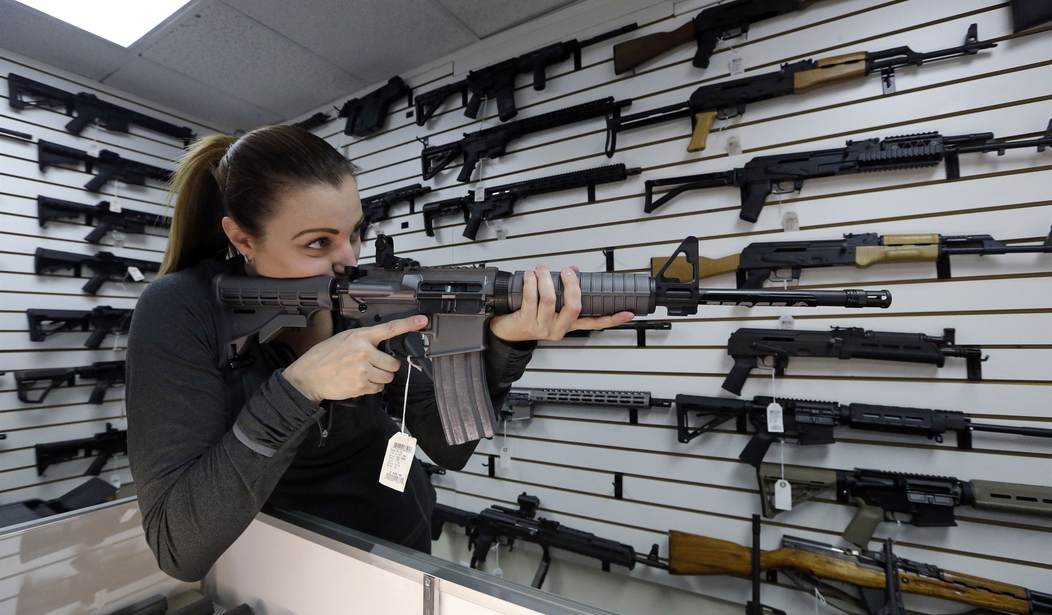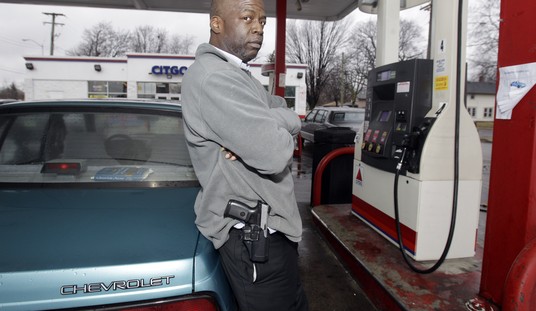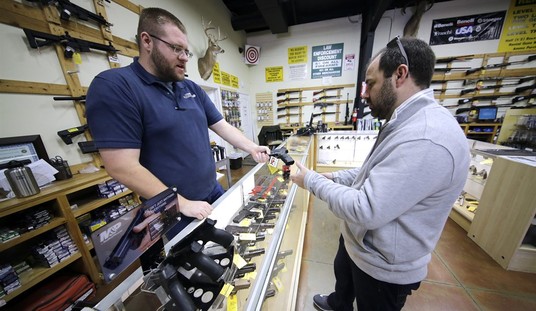What exactly is an “assault weapon”? Joe Biden’s nominee to head up the ATF famously said earlier this year during his Senate Judiciary confirmation hearing that he wants to ban them, but couldn’t provide a definition of what an assault weapon is, exactly, when he was pressed by Sen. Tom Cotton of Arkansas.
“An assault weapon would be, in the context of the question you asked, whatever Congress defines it as,” was Chipman’s response. On the face of it, that seems like a non-answer, but in a way Chipman was right. There is no definition of “assault weapon,” because it’s an invented term. Generally it refers to semi-automatic rifles like the AR-15, but in statute the definition hinges on various features of the firearm as opposed to the functionality itself. The federal definition of “assault weapon” from 1994-2004 was different than the definition of “assault weapon” in many states, and in fact, as the San Francisco Chronicle acknowledges in a new piece on the “complicated history” of assault weapons in California, that state has repeatedly re-defined the phrase in an attempt to ban more guns.
Of course, given that this is the San Francisco Chronicle we’re talking about, you can imagine that the paper pins the blame for the shifting definitions on the firearms industry and not the gun control lobby.
The original 1989 legislation identified as assault weapons a list of gun makes and models, which then — with some narrow exceptions — could not be purchased anywhere in the state. There was a major caveat: Assault weapons bought before the law was passed were grandfathered in. People could register and legally own them.
Not long after, gun manufacturers simply began selling Californians firearms very similar to the ones on the prohibited list. They were generally legal to sell in the state. The difference? These firearms had new names.
Thus began a game of legislative whack-a-mole. The state would tweak the law, only to see gun manufacturers promptly produce and sell workarounds to stay compliant.
In 1999, lawmakers targeted copycat guns, expanding the ban to include not only named firearms but also categories of semiautomatic firearms that combined specific “features,” such as pistol grips for both hands. A California Supreme Court decision allowed the expansion of the ban to go into effect the next year. But, again, those who already owned them were allowed to register and keep the targeted guns.
Lawmakers had hoped that listing features, rather than just the names of gun models, would make it harder for gunmakers to manufacture firearms they understood to pose a “threat to the health, safety, and security of all citizens of this state.” But soon after the law was passed, manufacturers were selling firearms with modifications to pass the “features test,” as that piece of legislation became known. Those firearms largely looked and felt similar to ones that were newly banned in the state.
In 2016, in the aftermath of the San Bernardino Inland Regional Center shooting that killed 14 people and injured 22 others, legislation evolved again, with the intention of making it harder for operators to rapidly switch out magazines (the ammunition storage and feeding devices for firearms). Not long after, gun sellers and owners were creating mechanisms to keep the reloading process relatively seamless and quick.
While the Chronicle tries its best to paint the firearms industry as the bad guy here, in truth manufacturers simply found a way to comply with state law and continue to produce a product that’s in high demand for self-defense, hunting, and competitive shooting. The problem isn’t that gun makers kept making legal products, it’s that California lawmakers are trying to stop criminal behavior by imposing bans on legal gun owners. Even the San Francisco Chronicle is left wondering if all of their efforts have actually accomplished anything.
Researchers have found it difficult to assess the overall impact of assault weapons bans, though there is some evidence about the effects of certain regulations. For example, there is growing evidence that restrictions on large-capacity magazines may play a role in reducing the carnage from mass shootings. Christopher Koper, a criminologist and law professor at George Mason University, found that restrictions on magazines could reduce mass shooting deaths by 11% to 15%.
Large-capacity magazines, defined by the state as holding more than 10 rounds, are illegal for sale in California. But an effort to ban their possession, too, is tied up in the courts.
The assault weapons ban’s impact on gun sales and ownership is also difficult to evaluate. There is no definitive research showing how many fewer assault weapons there are in California as a result of the ban.
There was a large number of assault weapons in the state even before the ban. Californians who already owned guns classified as assault weapons in 1989 — and in subsequent years as the legislation evolved — could register their firearms with the California Department of Justice and keep them legally. Today, more than 185,000 assault weapons are registered with the state, according to Judge Benitez’s June ruling, which cited state data.
And these guns are used in just a handful of crimes every year, whether we’re talking about California-compliant rifles or the millions of AR-15s sold in states that don’t place any restrictions on features like adjustable stocks or detachable magazines.
It’s amazing to think of the money and political capital spent banning guns that advocates can’t easily define and that are used in fewer homicides than fist and feet, but for decades now a ban on so-called assault weapons has been the Holy Grail of the gun control lobby. Starting in the 1980s, when their campaign to convince cities and states to ban handguns fizzled out, “assault weapons” have been the primary target of anti-gun activists. In California, they’ve successfully banned “assault weapons” on multiple occasions, thanks to their ever-evolving definitions, but only a handful of states have followed suit and the federal ban that was put in place in 1994 was allowed to expire a decade later.
In the meantime, AR-15s have become more ubiquitous than Ford F-150 pickup trucks, with tens of millions of rifles in the hands of law-abiding gun owners. AR-15s are the most commonly-sold rifle in the U.S. today, and frankly they’ve become not only a practical multi-purpose firearm for many Americans, but a political statement as well, thanks to the efforts of the gun control lobby to demonize the long guns. With an en banc panel of the Ninth Circuit now considering the constitutionality of California’s latest ban, it won’t be long before the Supreme Court will have the chance to weigh in on the issue, and I suspect that if they grant cert once the Ninth Circuit’s decision has been handed down, any ban on “assault weapons” (no matter how they’re defined) is in trouble.









